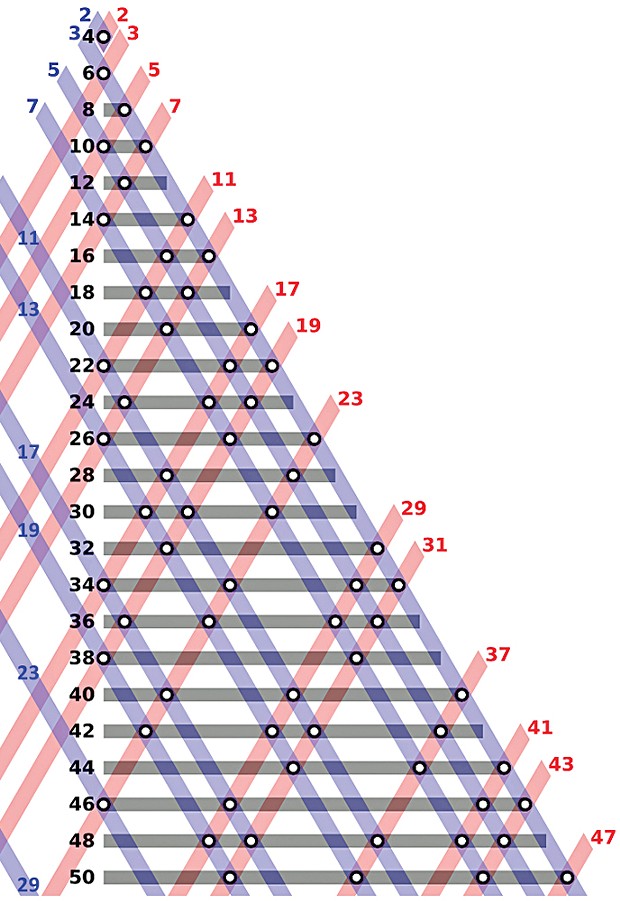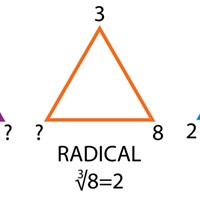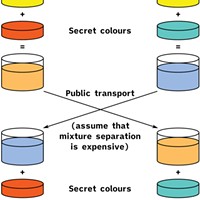
Image by Adam Cunningham and John Ringland, via Creative Commons
Even integers from 4 to 50 as the sums of two primes. Goldbach's Conjecture posits that every even integer greater than 2 can be expressed as the sum of two primes in at least one way.
[
{
"name": "Top Stories Video Pair",
"insertPoint": "15",
"component": "17087298",
"parentWrapperClass": "fdn-ads-inline-content-block",
"requiredCountToDisplay": "1"
}
]
It's simple. Prove the Goldbach Conjecture: Every even integer greater than two is the sum of two primes.
Shouldn't be too hard, right? Figure it out and you'll win a cool mil from the Clay Mathematics Institute, and you'll probably get a Fields Medal — the math equivalent of the Nobel Prize as long as you're under 40 — in the bargain. Here's a little background to get you started.
In 1742, 35-year-old Swiss mathematician Leonhard Euler was having a correspondence regarding prime numbers with Christian Goldbach, a mathematician 17 years his senior from Königsberg in present-day Russia. After several exchanges, Euler summed up Goldbach's ideas in what is now known as the Goldbach Conjecture, noting, "I hold this to be a completely certain result ... aside from the fact that I can't prove it myself." Today, despite the lure of the $1 million prize, you can be pretty sure that if Euler (perhaps the greatest mathematician of all time) couldn't do it, you might have a spot of trouble proving it. Indeed, the conjecture has stood the test of time and remains unproven today. Which is weird, seeing as it's so simple to state in just 12 words, as above.
Recall that a prime number is a natural number only divisible by 1 and itself. Thus 7 is prime, being divisible only by 1 and 7, while 18 is composite, the product of 1 x 2 x 3 x 3. Goldbach's conjecture is that all even numbers greater than two (4, 6, 8, 10 ... 1,000,000, 1,000,002, etc.) can be expressed as the sum of two primes. The "greater than two" part of the conjecture excludes 2 since it's the sum of 1 + 1, and 1 isn't considered a prime (see box).
Using zippy computers, the conjecture was recently shown to be true up to 400 trillion (equivalent, for instance, to the number of seconds in nearly 13 million years). So it's almost certain, despite not actually being actually proven. Also, the larger the even number you're looking at, the more ways there are to express it as the sum of two primes. So while there's just one way to express 4 (2 + 2), there are two ways to express 10 (5 + 5, 3 + 7) and four ways to express 50 (19 + 31, 13 + 37, 7 + 43 and 3 + 47.
Feeling ambitious? Find the 28 ways to express 1,000 as the sum of two primes.
Barry Evans ([email protected]) wonders if he'd still get the million if he disproved the conjecture. He prefers he/him pronouns.
Speaking of...
-

The Log Connection
Jul 15, 2021 -

HSU Expanding Curriculum with Polytechnic Push
Jun 15, 2021 -

How to Trust Strangers
Mar 4, 2021 - More »
Comments (4)
Showing 1-4 of 4
more from the author
-
Doubting Shakespeare, Part 1: Stratfordians vs. anti-Stratfordians
- Apr 25, 2024
-
A Brief History of Dildos
- Apr 11, 2024
-
Eclipse!
- Mar 28, 2024
- More »
Latest in Field Notes
Readers also liked…
-
Trouble on the Line: The Reality Part 2
- Nov 3, 2022
































